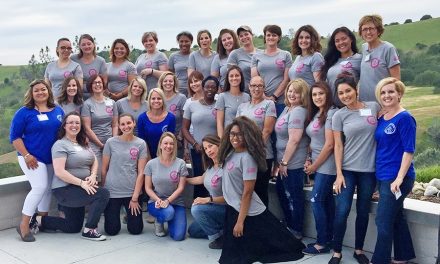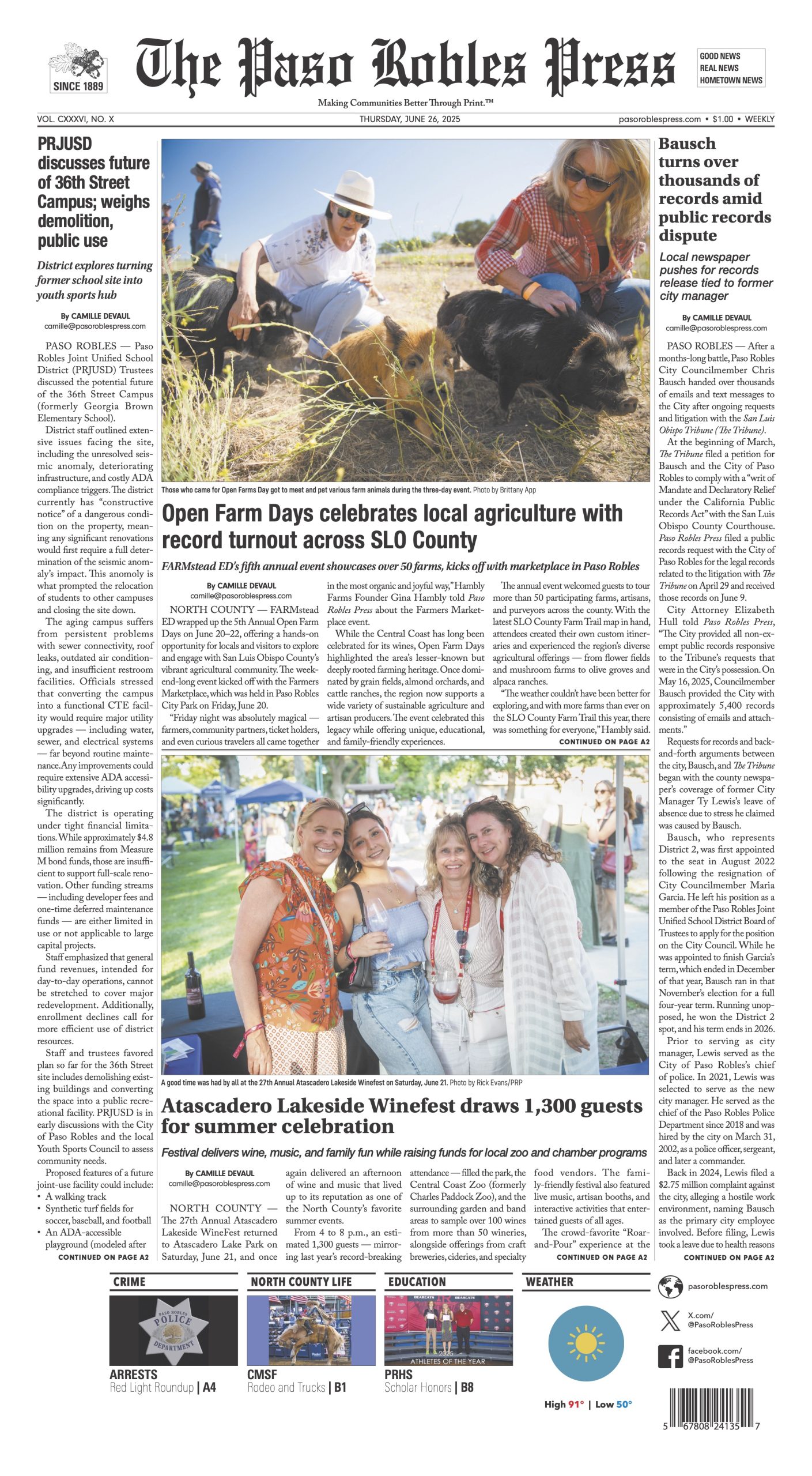 Paso is becoming involved in a very good thing!
Paso is becoming involved in a very good thing!
Without question, one of the most serious problems in America is addiction. In this issue of your PASO Magazine is the first of a two-part article of what one SLO County organization is doing to help those afflicted. We’ll look at Restorative Partners, its origin, it’s mission, and the progress to date. Most specifically, we’ll see what is happening behind the scenes in El Paso de Robles to make a dent in this most insidious of maladies that rips asunder the lives of women and the toll it takes on their families. These two chapters will have history and be honest. Chapter 1 explains the history of Restorative Partners and might make you shake your head with despair and Chapter 2 will make you jump up and cheer at the size of the hearts our fellow Roblans have in caring for one another.
Some 450 years ago (1650) in France, a small Order of six nuns, the Sisters of St. Joseph, began working to help the needs of ordinary people and relieve them of poverty plus care for orphans. They also wanted to help those imprisoned.
Their goals were lofty and the timing lousy. The French Revolution began in 1789 and with it, repressing formal religion. In short order, that group of nuns was beheaded. When the Revolution ended in 1799, the order re-established itself.
By 1836, there were enough nuns that the Bishop of St. Louis, Missouri requested them to start a school to specifically work with the deaf. They came from Lyon, France. The Order — basically a word that means ‘group with common goals and ideals’ — flourished and spread across the U.S. and other countries doing their work to help. St. Louis is still the primary U.S. location and there are now four other major American regional locations. One of them is L.A.; it opened in 1903.
Some 60 years ago, a girl named Theresa Harpin was born near Anaheim. She attended the University of San Diego and as a sophomore had a life altering meeting that resulted in her transferring to Mt. St. Mary’s College and becoming a nun herself.

Sister T of Restorative Partners
Sister “T” went on to get a master’s degree at Notre Dame. After returning home, she received a phone call from a priest-friend that she known from earlier school days. He was now a Bishop and needed someone to open a new church. In 1989, there wasn’t much in San Bernardino County but cacti and jackrabbits, but the area looked looked to become a hotbed of housing for families who worked in L.A.
The Bishop and Sister T had confidence in one another, and he stunned her by asking her to start a parish in Corona! That was huge!
She agreed, and with not much more than her can-do attitude, it began from scratch. Finding temporary space to operate from was the first challenge. Since nuns can’t say Mass, she used “rent-a-priests” from any place she could get one to say Sunday Mass for her fledgling congregation.
In 1994, the temporary buildings had given way to a true parish with a real church on donated land. Her work there was finished. As a way to regroup and rededicate herself, Sister Theresa went to Israel in 1995 and studied for a year.
When she returned, her Mother Superior had a new assignment for her. Sister T was sent to SLO to head up the Newman Center at Cal Poly and that assignment lasted for seven years. During that time, Sister Theresa came to know and meet a tremendous number of important people in all walks of local life. Sister Theresa grew tremendously fond of the Central Coast with all it has to offer and with all its needs for justice.
With the assignment finished and handed off, she asked to stay and begin working with the jails and those incarcerated. Her goal was to help restore people’s lives as they returned to the world outside prison. The more she delved, the more she discovered the lack of programs that help those individuals. The more she discovered, the more determined she became to make real changes.
Sheriff Ian Parkinson became a fan and the proliferation of drugs and gangs was growing, as was the general population. For six years, Sister Theresa’s work in the jails taught her every aspect of the incarcerated’s plight. In 2011, the passage of AB-109 — the transfer of responsibility of low level inmates from state prisons to localized jails and re-entry programs — began in earnest. Parkinson knew Sister Theresa had deep connections and was a savvy administrator. He knew she could help and had no qualms asking for it. His message: “Concentrate on Drug and Alcohol abuse and what it’s done to local families, the victims and the children!”
Fresno had gotten out in front of their situation and had a program to help with those on probation. Sister Theresa and others went to see what it was all about. On the way back, they stopped at Kettleman City. At the In N Out Burger, the name for RESTORATIVE PARTNERS was written on a napkin. A day later, the program started in SLO County.
Next month, we’ll look at the programs — how Restorative Partners got to Paso and what Paso provides women and their children at Anna’s Home. It’s pretty amazing. See you back here in Nov. for Chapter 2.








